Nut trees are not only sources of delightful flavors but also contributors to thriving gardens and landscapes. Beyond the common fruit trees, the world of nut trees offers an array of options for both sustenance and profitability. Understanding the nuances of these 35 nut tree varieties can empower farmers to make informed choices, enriching their agricultural endeavors. From pecans to Ginkgo nuts, each variety bears unique traits, making identification an engaging and fruitful pursuit.
- Pecan tree (Carya illinoinensis)

Native to the United States, fast-growing pecan trees require ample water and space, offering nutritious nuts rich in vitamins and healthy fats.The pecan tree, scientifically known as Carya illinoinensis, is a species native to North America, primarily found in the southern United States and Mexico.
Pecan trees can be susceptible to certain pests and diseases, including pecan scab, which can affect the quality of the nuts. Additionally, weather conditions, such as late spring freezes or excessive rain during the growing season, can impact the harvest.
Overall, the pecan tree is highly valued for its nuts and as an attractive shade tree. Its cultivation requires attention and patience but can be rewarding for those willing to invest the time and effort.
2. Pine nut tree (Pinus spp.)
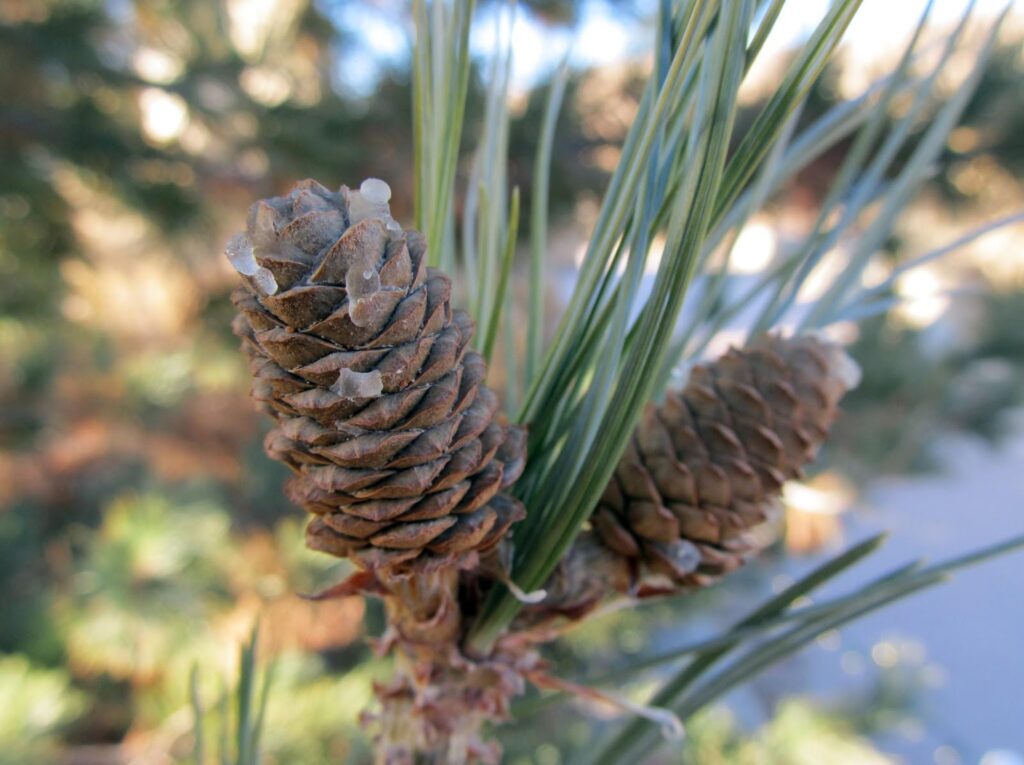
Trees producing pine nuts have distinct long, thin needles and woody cones, available in various sizes suitable for home gardens. Pine nut trees, belonging to the genus Pinus, produce pine nuts or pine seeds and are valued for their culinary uses and various health benefits. Here’s an overview:
Overall, pine nut trees are valued for their flavorful nuts and have cultural, culinary, and economic significance worldwide. However, the harvesting process and variability in yields can present challenges for consistent production.
- 3. Ginkgo biloba
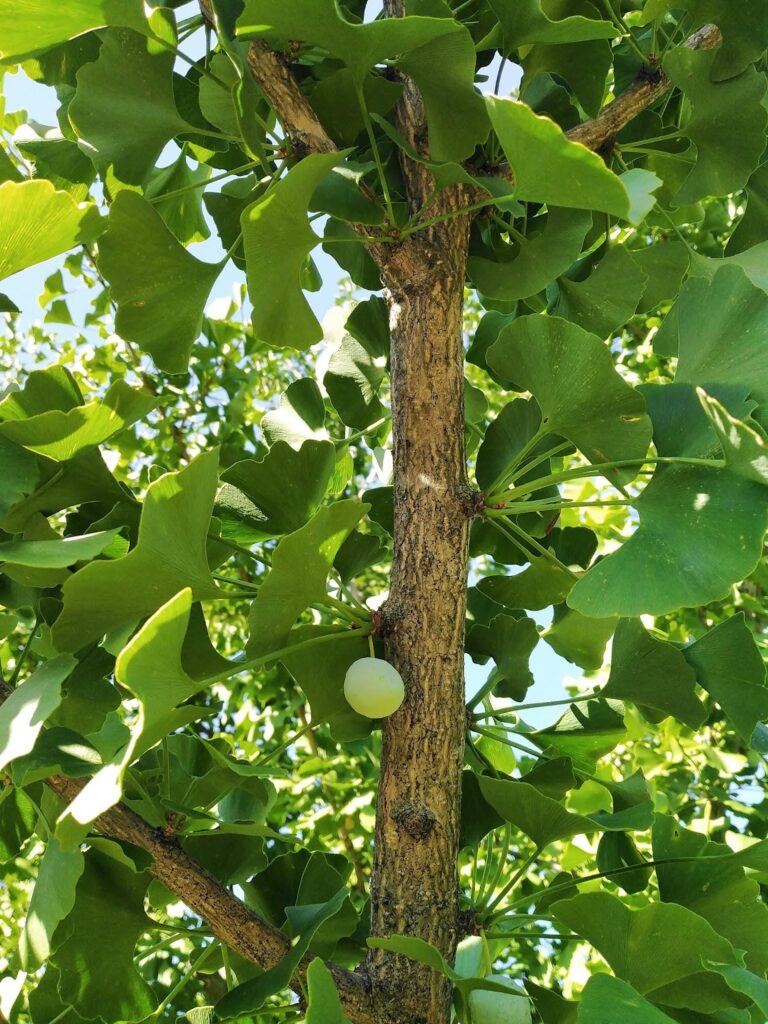
Known for resilience, these trees offer small, yellowish-brown nuts enclosed in fleshy fruit. Valued in traditional Chinese medicine for various medicinal properties. Ginkgo biloba is a unique and ancient tree species known for its distinctive fan-shaped leaves and medicinal properties. Here’s an overview:
Overall, Ginkgo biloba is a fascinating tree with a rich history, appreciated for its unique appearance and traditional medicinal uses. However, while it’s widely used as a supplement, more research is needed to confirm its effectiveness for various health claims.
- 4. American beech (Fagus grandifolia)
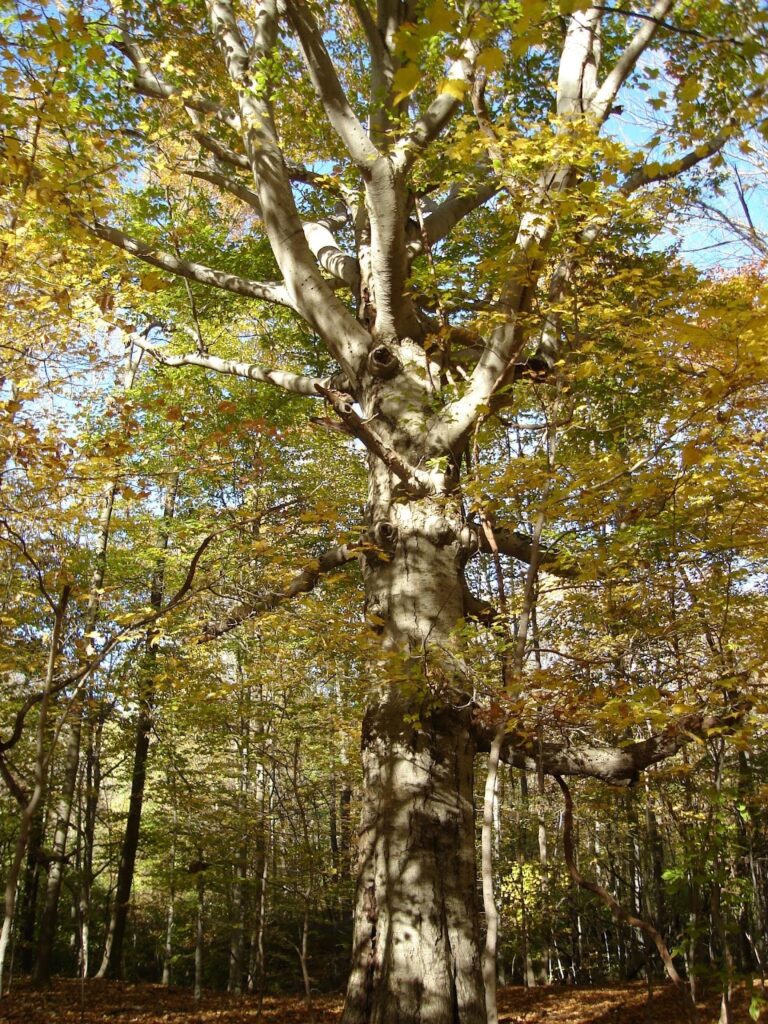
Slow-growing with smooth, gray bark, these trees produce edible nuts and are crucial for both human and wildlife sustenance. The American beech (Fagus grandifolia) is a majestic and widespread tree native to eastern North America. Here are some key points about it:
American beech trees are notable for their beauty, ecological importance, and historical significance, despite facing challenges such as disease. They remain an integral part of many forest ecosystems in North America.
5. Karuka (Pandanus julianettii)

Found in the South Pacific, the karuka bears clusters of small, edible nuts rich in fat, vital to regional cuisines.
The karuka tree and its nuts hold cultural, dietary, and economic significance for many indigenous communities in the Pacific region. Efforts to sustainably manage and conserve these trees are important for preserving traditional practices and ensuring food security in these areas.
6. Hazelnut tree (Corylus avellana)

Known as filberts, these resilient trees produce oval nuts, offering high yields adaptable to various soils and climates. Hazelnut trees are not only valued for their delicious nuts but also for their ecological benefits and adaptability to various growing conditions. They play a significant role in both culinary traditions and sustainable agriculture.
7. Black walnut tree (Juglans nigra)
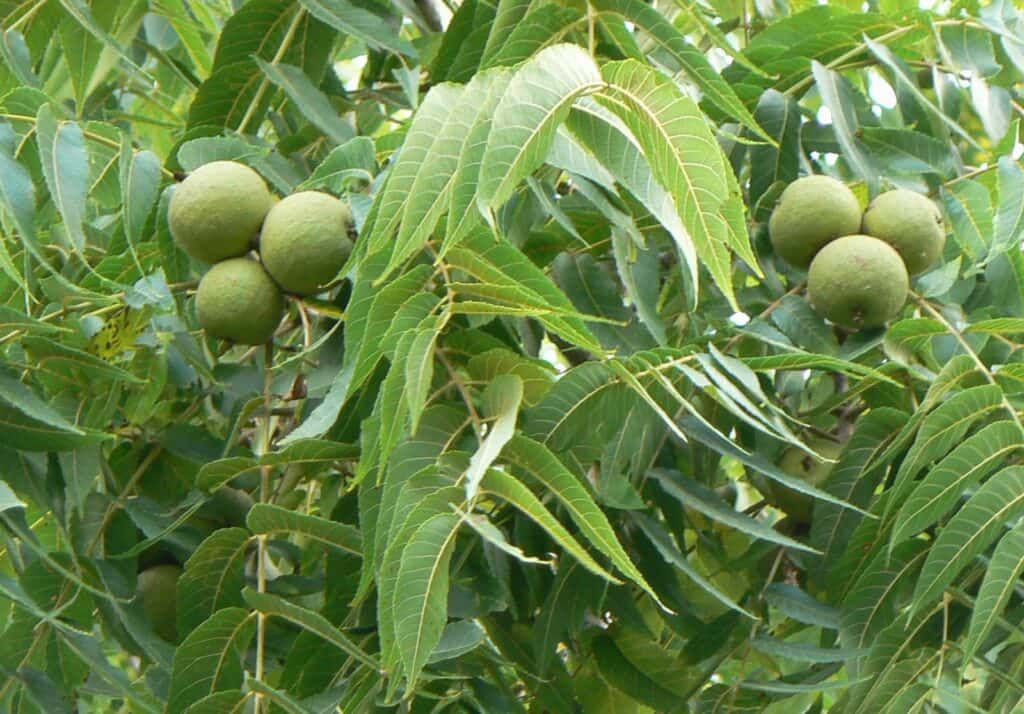
Native to the US, they produce strong-tasting nuts, often used for furniture wood, and can inhibit the growth of other plants nearby. Overall, black walnut trees are prized for their nuts, wood, and ecological contributions, but they require careful consideration due to their potential challenges for other plant growth and the labor-intensive nature of harvesting their nuts.
- 8. Oak tree (Acorn) – Quercus spp

Beyond their lumber value, oaks produce acorns, a vital food source for wildlife and, when processed, nutritious for humans. Some oak species face threats from diseases, pests, and habitat loss due to human activities. Diseases like oak wilt and pests such as oak borers can affect the health of these trees.
Oaks are iconic, long-lived trees that play significant ecological roles, provide valuable resources, and hold cultural significance. Their presence in forests and landscapes supports diverse ecosystems and wildlife habitats.
- 9. Shagbark hickory (Carya ovata)
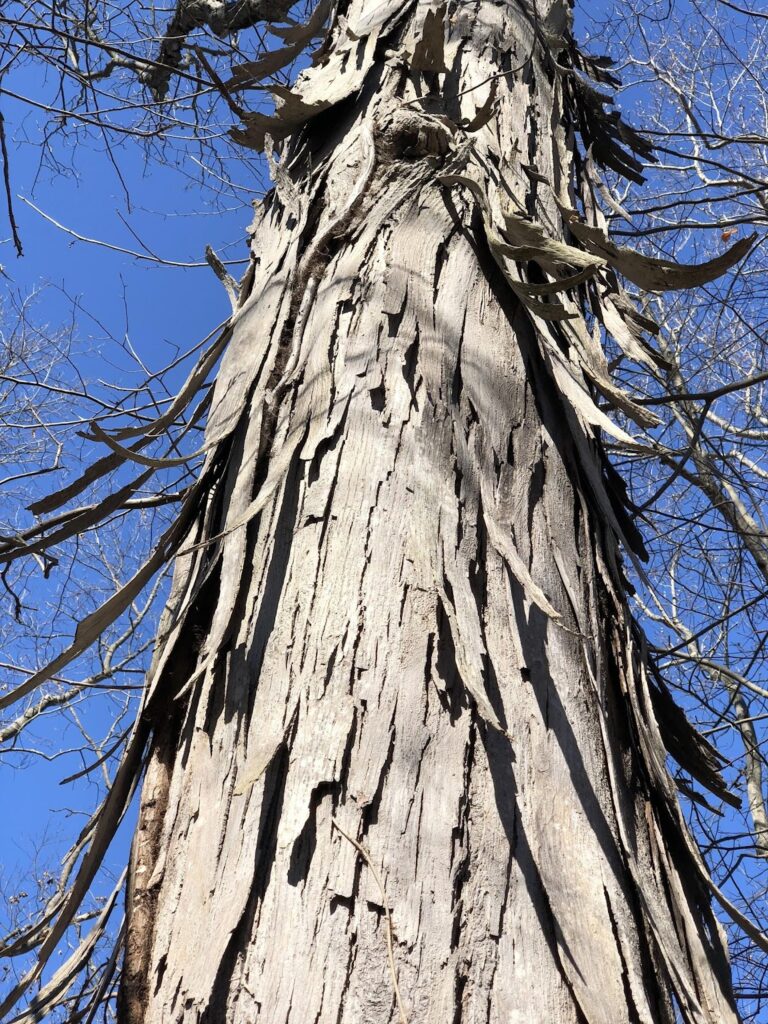
Unique for its distinctive peeling bark, these trees provide sweet, edible nuts suitable for cooking and have valuable timber. These trees provide food and habitat for various wildlife species. Their nuts are an important food source for squirrels, chipmunks, and birds.
Overall, the shagbark hickory is a distinctive and valuable tree, known for its unique bark, edible nuts, and versatile wood, playing a significant ecological and cultural role in the regions where it grows.
10. African walnut (Coula edulis)
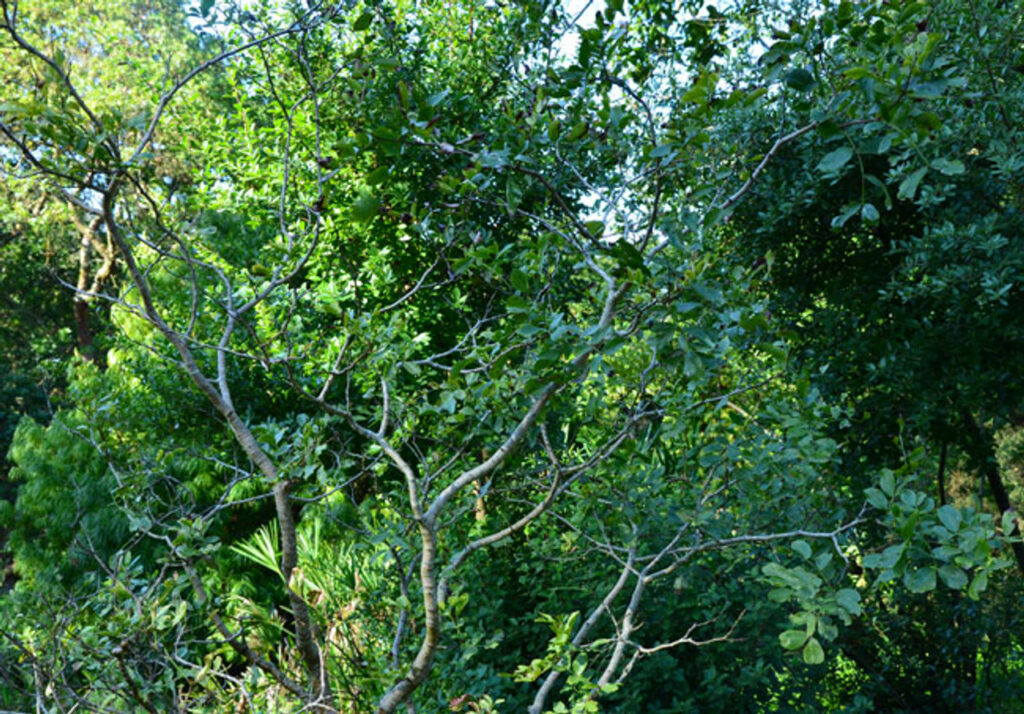
Native to West and Central Africa, these trees produce large, nutritious nuts, crucial in local diets for their fat and protein content. The nuts from the African walnut tree have economic value in local markets and trade, providing a source of income for communities involved in their harvest and sale.
The African walnut tree and its nuts are valued for their culinary uses, nutritional benefits, and cultural significance in various regions of tropical West and Central Africa, contributing to local economies and traditional practices.
11. Almond tree (Prunus dulcis)
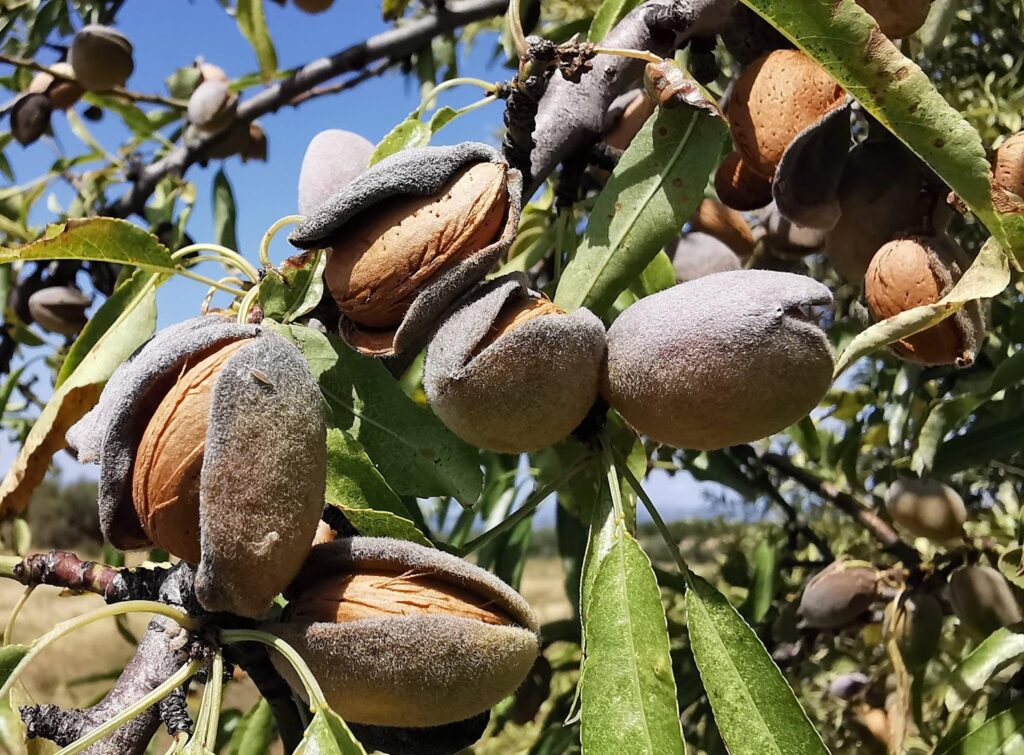
Early bloomers, almonds have self-pollinating varieties thriving in dry climates, with nuts widely used in culinary applications. Almond cultivation has faced some scrutiny due to the water-intensive nature of their production in regions susceptible to droughts. Efforts are being made to improve water management and sustainability practices in almond farming.
Almond trees and their nuts are highly valued for their culinary versatility, nutritional value, and contribution to various cuisines worldwide, despite some environmental considerations in their cultivation.
12. English walnut tree (Juglans regia)

Easily identifiable by their long leaves and oval-shaped nuts, these trees offer highly valued nuts used in various dishes. Walnut cultivation can face challenges from pests and diseases, such as walnut blight and walnut husk fly, which can affect nut production.
English walnut trees and their nuts are highly valued for their culinary versatility, nutritional benefits, and wood quality, making them significant in both agricultural and woodworking industries.
13. Hickory nut tree (Carya spp.)
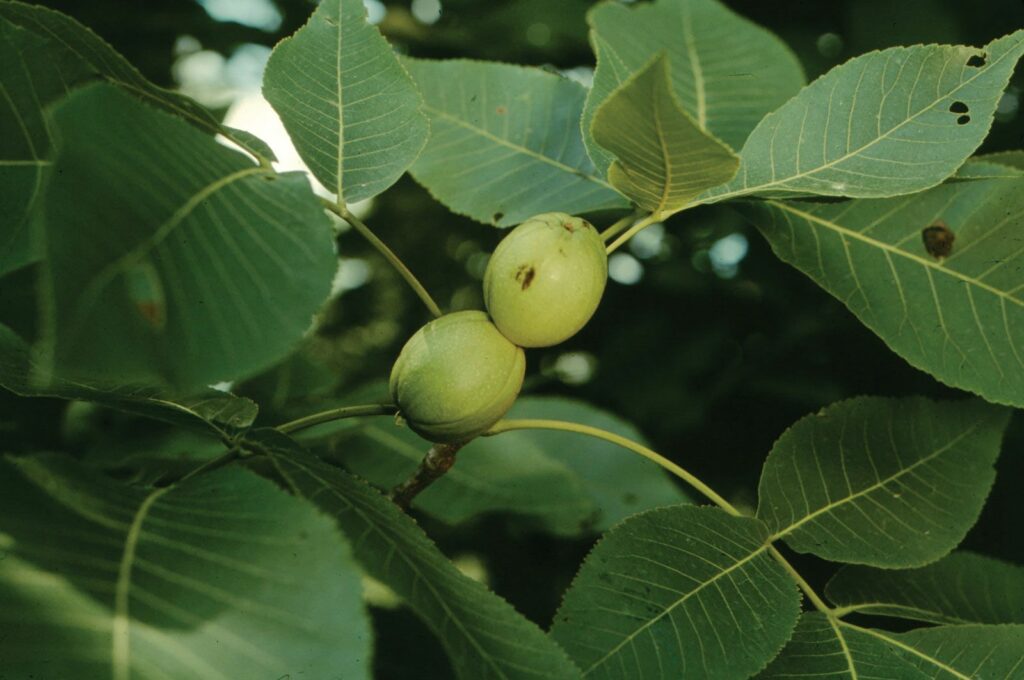
Majestic in growth, hickories provide small, sweet nuts with sturdy shells, contributing to forest ecosystems and wildlife habitats. Frost-tolerant macadamia variety from southeast Queensland, Australia, yielding smaller nuts used similarly in cuisine.
Each of these nut trees carries unique qualities, adapting to various climates and providing nuts valuable for both culinary and nutritional purposes. They contribute to ecosystems, local economies, and historical diets, reflecting a rich diversity in the world of nut-bearing trees.
14. White oak (Quercus alba)
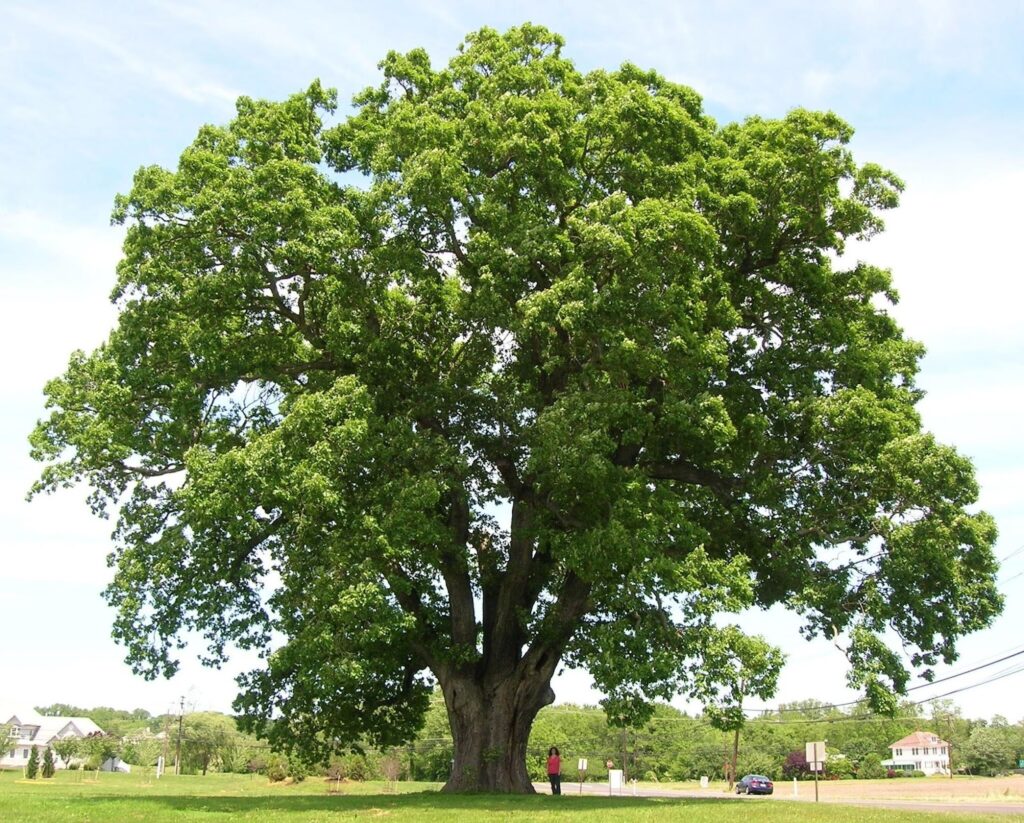
Towering over 100ft tall, these long-lived trees provide acorns that were historically vital to Native American diets. Overall, the White Oak stands as a symbol of strength and longevity, offering not only a vital food source for wildlife but also a valuable resource for human use, showcasing its multifaceted significance in ecosystems and cultures.
15. Chilean hazelnut (Gevuina avellana)
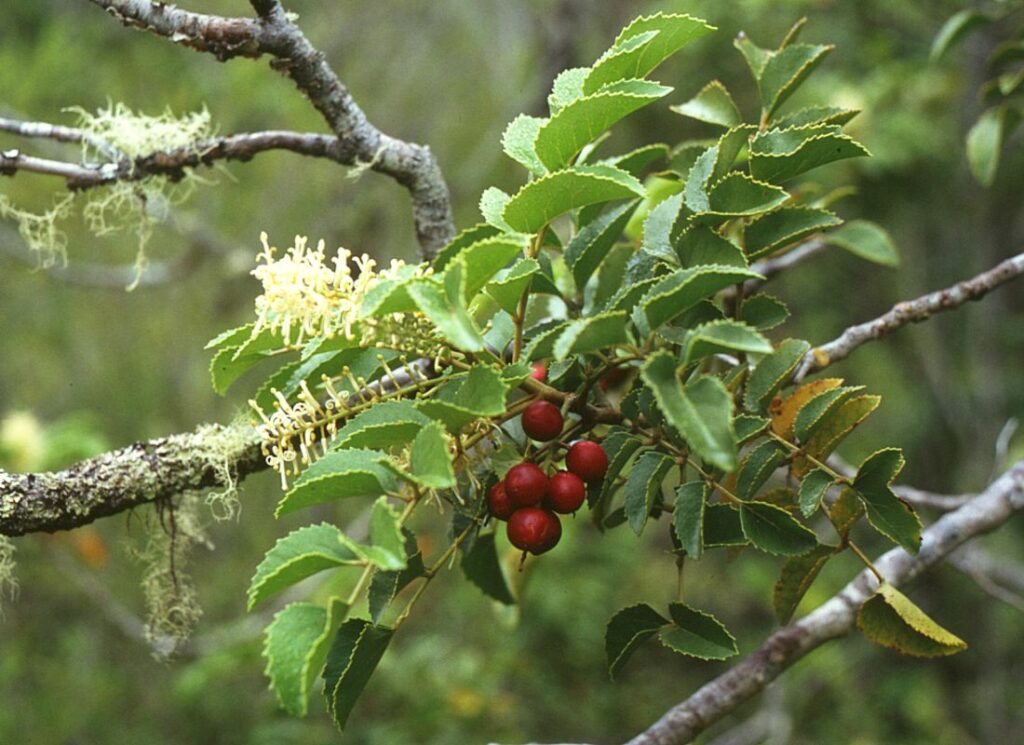
Cold-tolerant, these trees produce fat and protein-rich nuts, commercially harvested in Chile for various purposes. The Chilean Hazelnut, with its ability to thrive in cold climates and provide nutritious nuts, stands as a testament to the intersection of cultural heritage, economic value, and ecological importance within its native habitats. Efforts to preserve and sustain these trees are crucial for maintaining biodiversity and cultural traditions in the region.
16. Pili nut tree (Canarium ovatum)

Native to the tropics, pili nuts have a sweet, buttery flavor, encased in a hard shell within ovoid fruits. The Pili Nut Tree stands as an integral part of Southeast Asian cultures, offering not only a unique and flavorful nut but also contributing to local economies and traditions. Efforts to preserve and sustain these trees are crucial for maintaining cultural heritage and supporting livelihoods in the regions where they thrive.
17. Beech tree (Fagus spp.)

Slow-growing with distinctive bark, beeches produce triangular nuts within prickly burrs, valuable for their fats and protein. Beech trees, with their iconic appearance and rich cultural significance, are not only valuable for their ecological role in forests but also hold a place in folklore and historical narratives across various cultures. Protecting these trees is crucial for maintaining biodiversity and preserving cultural connections to nature.
18. Chestnut-leaved oak (Quercus castaneifolia)
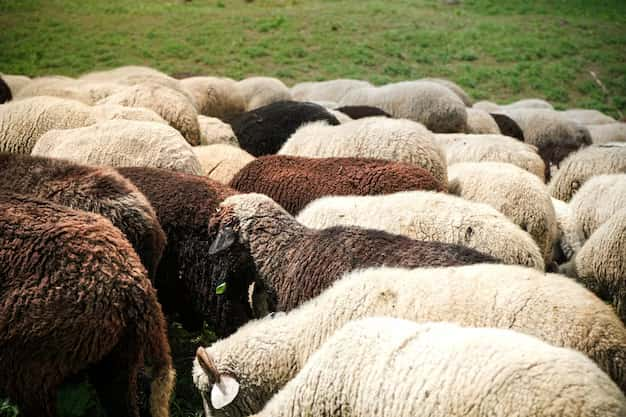
Evergreen oaks native to eastern Asia, producing acorns edible when leached, thriving in Mediterranean climates. The Chestnut-leaved Oak, with its characteristic foliage and adaptability, contributes significantly to the biodiversity and ecological balance of the regions it inhabits. Preserving and safeguarding these trees are crucial for maintaining the health and diversity of local ecosystems.
19. American chestnut (Castanea dentata)

Historically dominant in Eastern US forests, nearly extinct due to blight fungus, offering large, sweet nuts. The American Chestnut, once an iconic species of eastern North American forests, faced a tragic decline due to disease. While challenges persist in restoration efforts, ongoing initiatives and dedication aim to revive and reintroduce this once-dominant tree, seeking to restore its ecological role and cultural significance.
20. Butternut tree (Juglans cinerea)
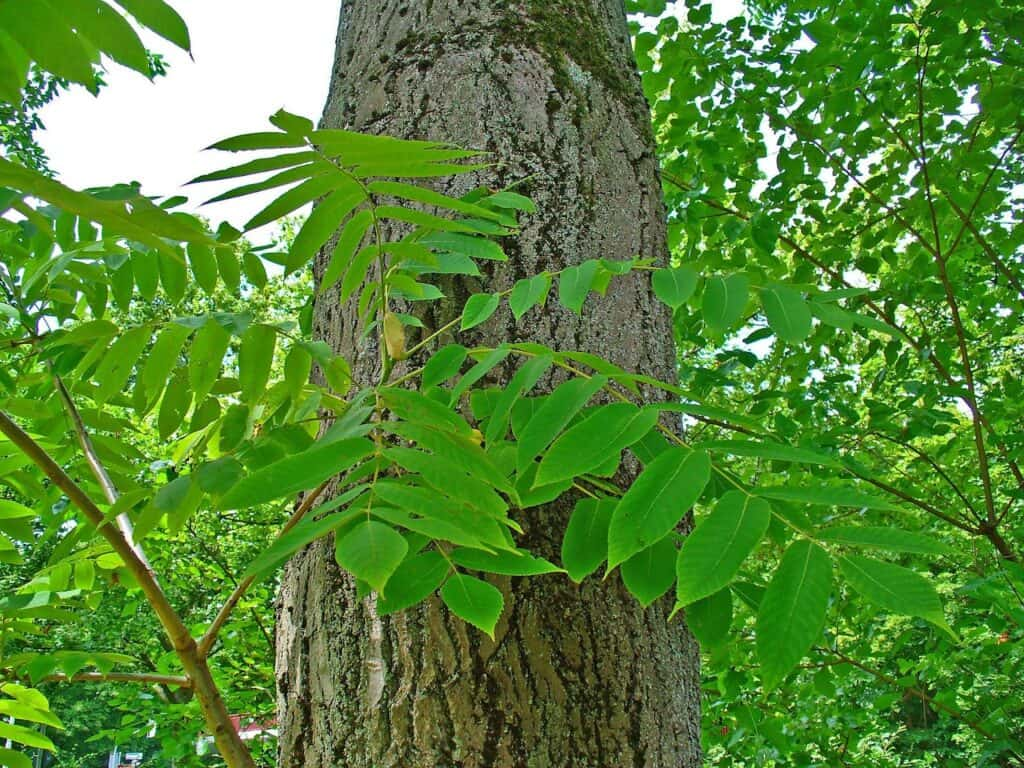
Cold-hardy, identified by their distinctive bark, these trees produce oblong nuts and face threats from fungal diseases. The Butternut tree, with its distinctive nuts and valuable wood, holds a place of ecological importance and cultural relevance in North America. However, the species faces challenges from disease, making conservation efforts crucial for preserving its unique traits and ecological contributions in forest ecosystems.
21. Brazilian nut tree (Bertholletia excelsa)

Towering trees native to South America, producing large, rich nuts within heavy capsules, valued for their selenium content. The Brazilian Nut Tree stands as an iconic species vital to the Amazon rainforest’s ecosystem and local economies. Conservation efforts emphasize sustainable harvesting practices, protection of its habitat, and raising awareness about its ecological importance to ensure the tree’s preservation and the conservation of the Amazonian rainforest.
22. Korean pine (Pinus koraiensis)

Cold-hardy pine trees produce oil-rich nuts, used in traditional Eastern medicine, and tolerant of extreme temperatures. The Brazilian Nut Tree stands as an emblem of the Amazon rainforest, providing ecological stability and contributing significantly to local economies. Conservation efforts are crucial to protect both the tree and its habitat, ensuring the sustainability of this vital rainforest species and the diverse ecosystems it supports.
23. Macadamia nut tree (Macadamia spp.)
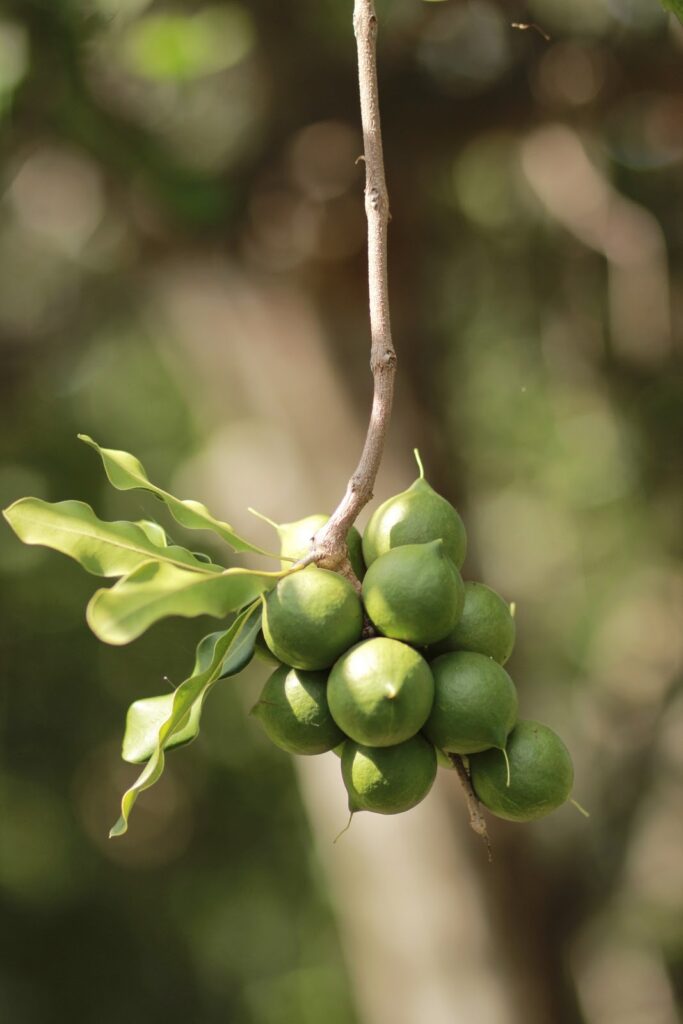
Slow-growing, these trees produce high-value nuts known for their hard shells, rich in monounsaturated fatty acids. The Macadamia Nut Tree stands as an esteemed species, prized for its delicious and nutritious nuts, as well as its ornamental value in landscaping. Cultivation and conservation efforts ensure the sustainability of these trees, preserving their economic and aesthetic contributions to various regions where they thrive.
24. Candlenut tree (Aleurites moluccanus)
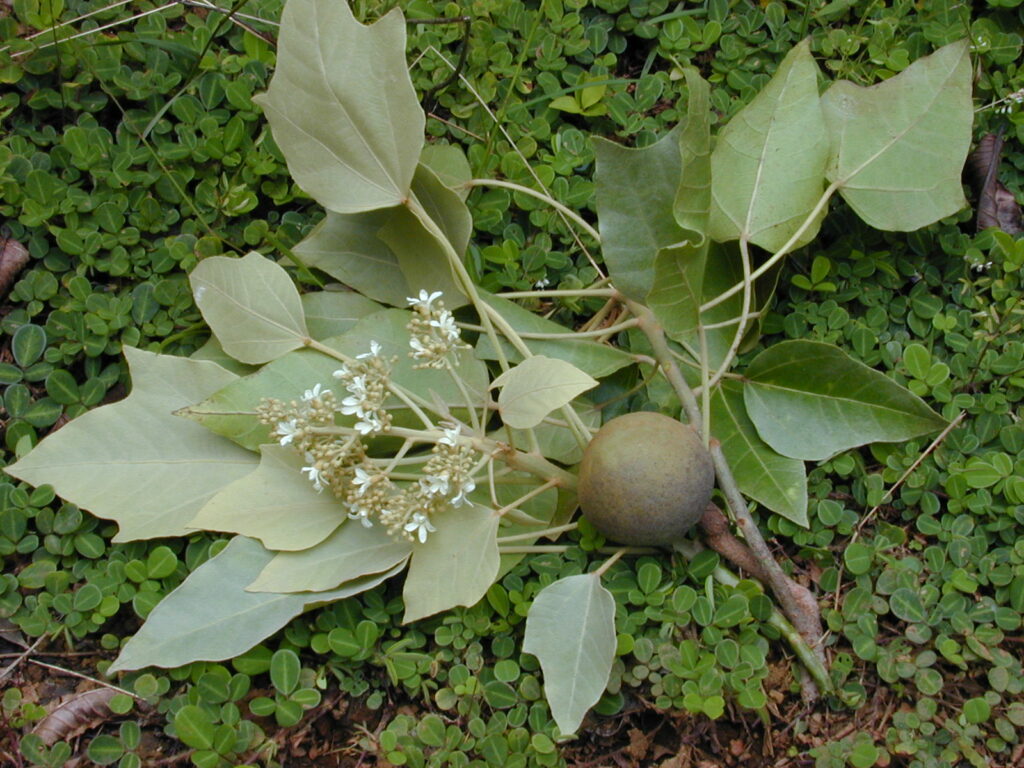
Native to Southeast Asia, its oil-rich nuts are used for lighting, fuel, and cuisine, adapting to various soils. The Candlenut Tree serves as a cultural icon in Southeast Asia, offering not only edible nuts but also a source of oil with diverse applications. Efforts to conserve these trees focus on preserving their ecological role while maintaining their cultural and economic significance within the regions they inhabit.
25. Kola Nut Tree (Cola acuminata)

Indigenous to West Africa, these trees produce caffeine-rich nuts chewed as a stimulant and used in soft drinks. The Kola Nut Tree stands as an emblem of cultural heritage in West Africa, deeply intertwined with traditions, social customs, and symbolic value. However, conservation efforts are vital to safeguard these trees and their habitats, ensuring their cultural legacy and ecological significance endure for generations to come.
26. Mongongo tree (Schinziophyton rautanenii)
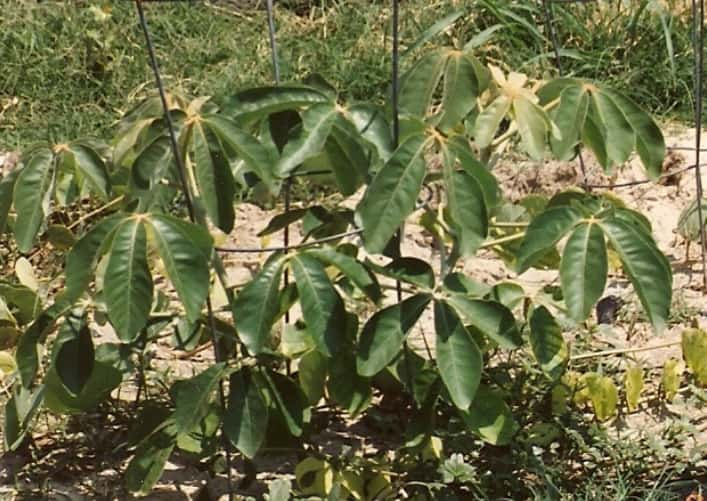
Found in southern Africa, these trees tolerate drought, producing high-fat nuts significant in local diets. The Mongongo Tree stands as an integral part of southern African culture, providing sustenance, economic opportunities, and a link to traditional practices. Efforts to conserve these trees and promote sustainable harvesting practices are crucial for preserving their cultural significance and ecological role in the region’s landscapes.
27. Sapucaia nut tree (Lecythis pisonis)

Tropical trees native to South America, producing large nuts high in fat, traditionally gathered and commercially harvested. The Sapucaia Nut Tree stands as an emblem of South American biodiversity and cultural heritage, offering not only edible nuts but also holding deep cultural and traditional significance. Conservation efforts are crucial to safeguard these trees, their habitats, and the cultural practices associated with them, ensuring their legacy endures for future generations.
28. Japanese walnut (Juglans ailantifolia)

Cold-tolerant and distinctive for smaller, rich-flavored nuts, thriving in well-drained soils and full sun. The Japanese Walnut stands as a versatile tree, appreciated for its multifaceted contributions—offering valuable timber, edible nuts, and ornamental beauty. Conservation efforts focus on preserving its genetic diversity and habitats while promoting its sustainable use in forestry and horticulture.
29. Italian Stone Pine (Pinus pinea)
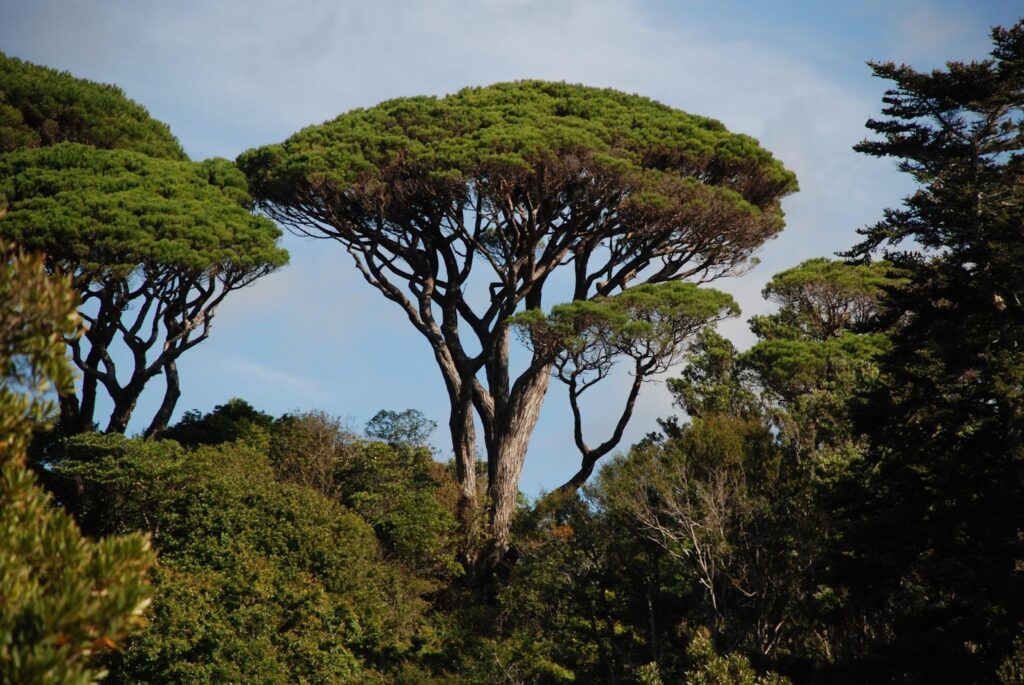
Native to the Mediterranean, these trees produce large pine cones containing edible nuts, commercially cultivated in Europe. The Italian Stone Pine stands as a symbol of Mediterranean landscapes, cherished for its aesthetic appeal, culinary contribution, and cultural significance. Conservation efforts prioritize its preservation in natural habitats while promoting sustainable practices for pine nut harvesting and the tree’s ornamental cultivation.
30. Colorado Pinyon (Pinus edulis)

Drought-tolerant trees in western North America, providing small pine nuts historically used by Native Americans and wildlife. The Colorado Pinyon remains an integral part of the southwestern U.S. ecosystem, offering not only culinary delights in the form of pine nuts but also contributing to the ecological balance of arid landscapes. Conservation efforts focus on preserving its habitat, ensuring sustainable harvesting practices, and recognizing its cultural significance within Indigenous communities.
31. Mexican Pinyon (Pinus cembroides)
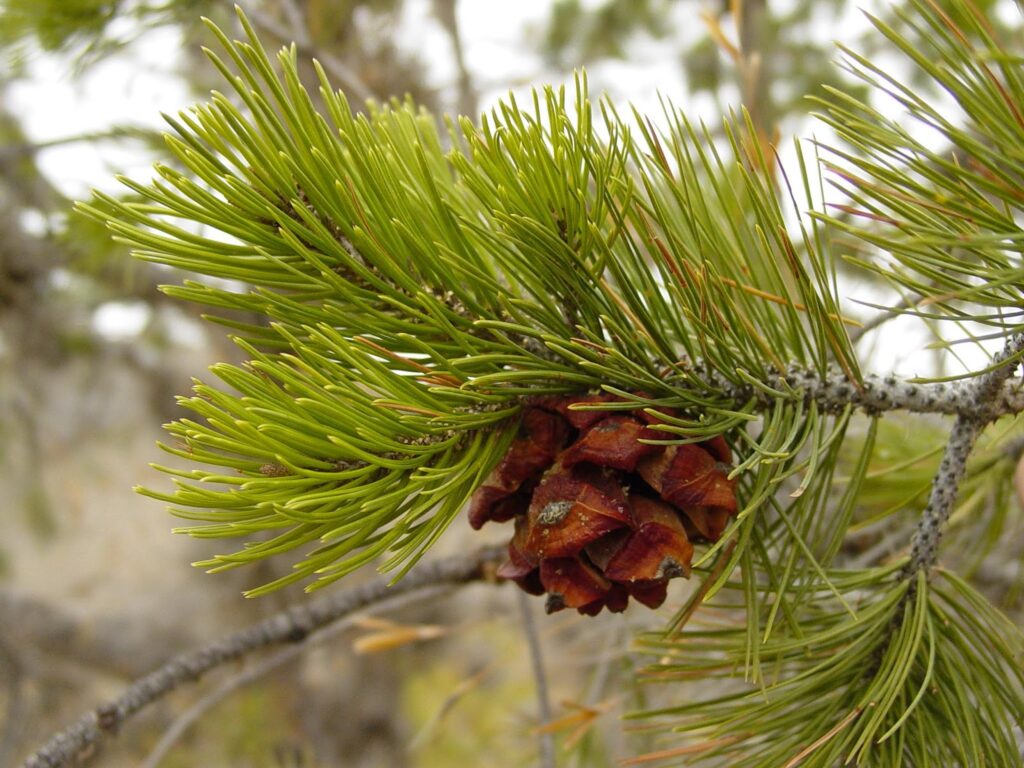
Thriving in arid regions, these trees offer pine nuts similar to the Colorado pinyon, traditionally gathered by Native Americans. The Mexican Pinyon remains a significant species within arid ecosystems, not only for its culinary value but also for its ecological resilience and cultural heritage. Conservation efforts emphasize habitat preservation, sustainable utilization of its resources, and acknowledgment of its cultural importance within local communities.
32. Yellowhorn (Xanthoceras sorbifolium)
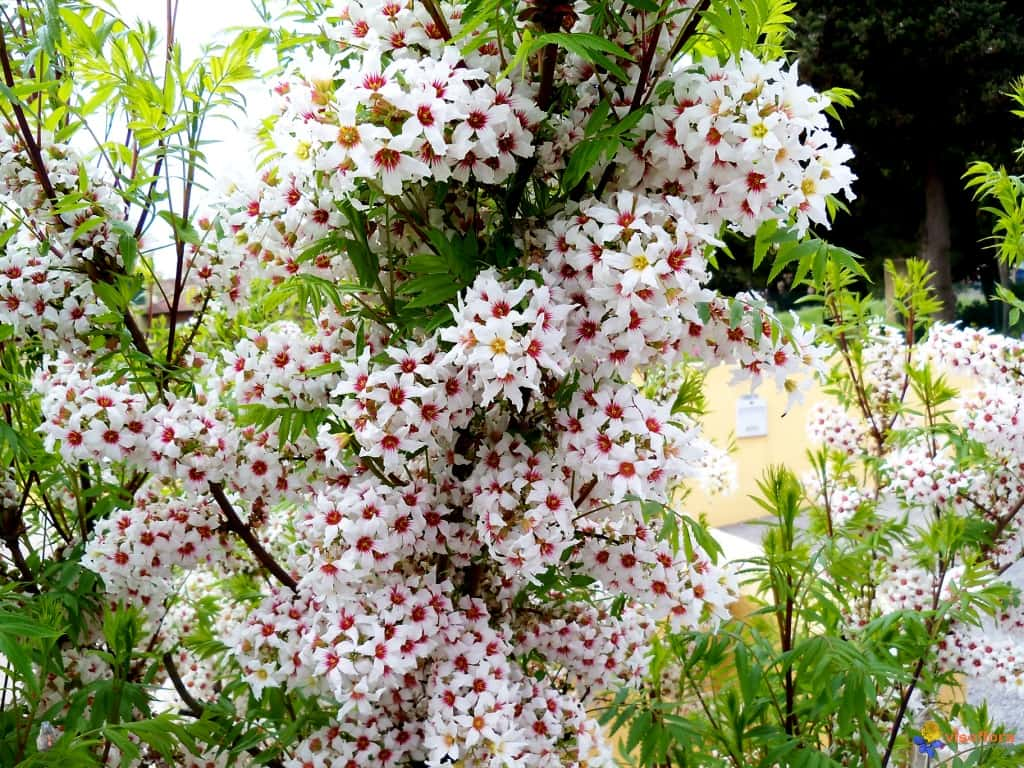
Native to eastern Asia, these trees tolerate varied climates and produce high-fat nuts used traditionally in Chinese medicine. The Yellowhorn stands as a versatile tree, prized for its aesthetic appeal, ecological contributions, and nutritional value. Conservation efforts aim to promote its ornamental cultivation, sustainably utilize its nuts, and safeguard its natural habitats to preserve its beauty and ecological role.
33. Argan tree (Argania spinosa)
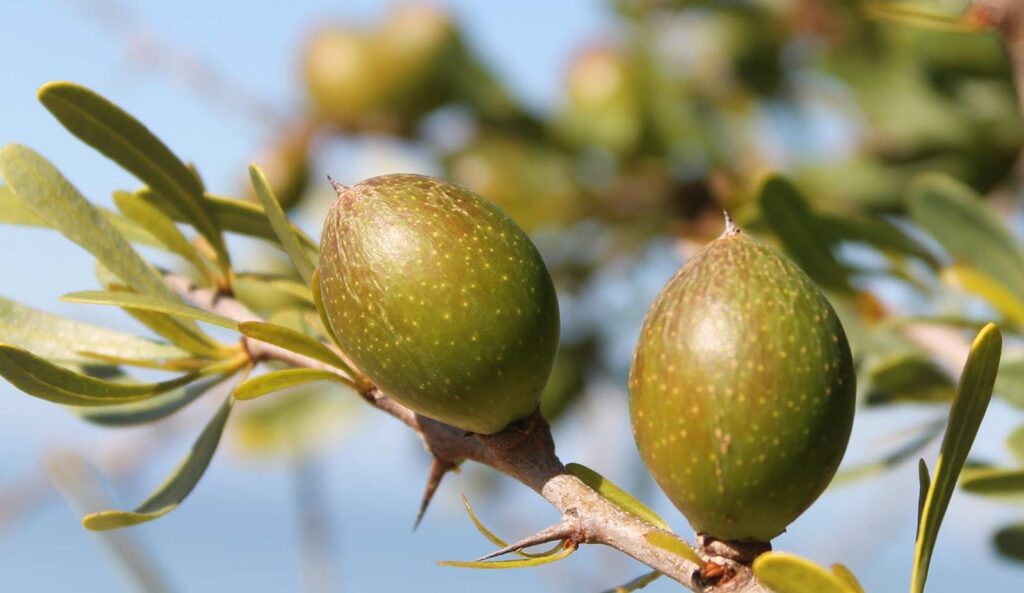
Native to Morocco, these near-threatened trees produce spiny fruits with edible kernels used for argan oil in cuisine and cosmetics. The Argan tree stands as an emblem of Moroccan culture, valued for its oil, ecological resilience, and contribution to local livelihoods. Conservation efforts focus on sustainable harvesting, afforestation initiatives, and community involvement to ensure the tree’s preservation and the sustainability of argan oil production.
34. Turkish Hazelnut (Corylus colurna)

Hardy and adaptable, these trees produce larger nuts than common hazelnuts, commercially grown in Turkey. The Turkish Hazelnut stands as a versatile tree, valued for its ornamental qualities, culinary significance, and ecological contributions. Conservation efforts emphasize the preservation of its natural habitats, sustainable cultivation practices, and raising awareness about its cultural and ecological importance.
35. Queensland Nut (Macadamia tetraphylla)

Frost-tolerant macadamia variety from southeast Queensland, Australia, yielding smaller nuts used similarly in cuisine. The Queensland Nut, though smaller in size, stands as an important member of the macadamia species, prized for its adaptability, culinary value, and contribution to the nut industry. Conservation efforts aim to protect its natural habitats, ensure sustainable cultivation practices, and enhance its genetic diversity for long-term viability.
Each tree has unique qualities, adapting to diverse climates and providing nuts valuable for both culinary and nutritional purposes, contributing to ecosystems and local economies. They contribute to ecosystems, local economies, and historical diets, reflecting a rich diversity in the world of nut-bearing trees.